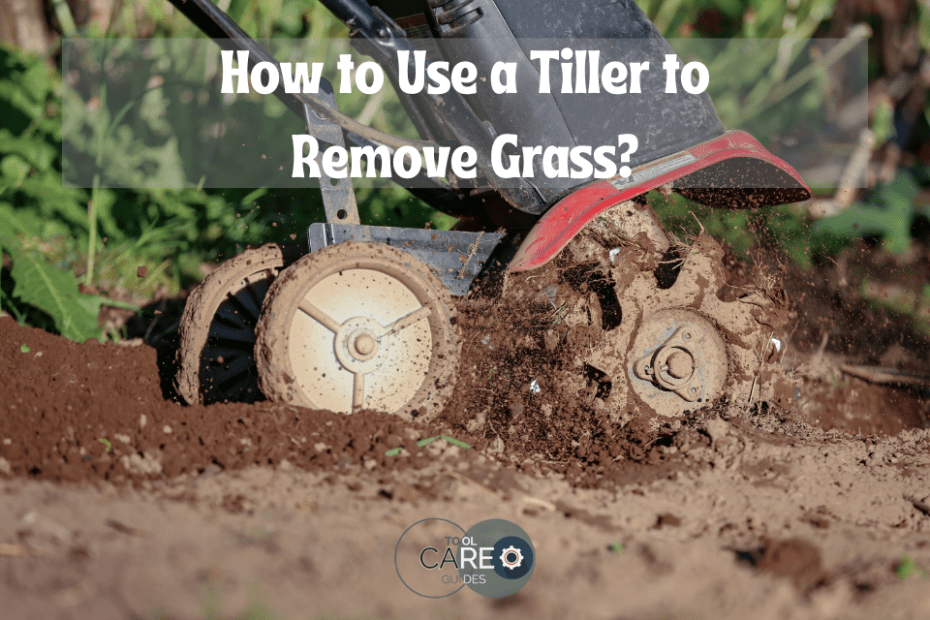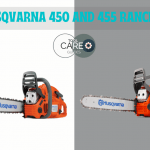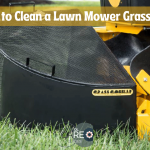Quick Overview of This Article
To use a tiller to remove grass, first anchor the tool securely. Then, operate the tiller in a steady and deliberate motion, gradually breaking up and removing the grass.
You can find a comprehensive guide on how to use a rototiller to level the ground, which includes grass removal, for preparing your yard for planting. Fall is the ideal season for using a rototiller as it allows soil amendments time to settle, resulting in fertile soil by springtime.
Tilling also makes planting cool-season crops easier. With the right technique and equipment, you can efficiently remove grass using a tiller and create a clean and smooth surface for your gardening needs.
Step 1: Assess The Area
Assessing the area is the first step to using a tiller to remove grass. By evaluating the soil conditions, obstacles, and any potential hazards, you can ensure a smooth and efficient grass removal process.
Before using a tiller to remove grass, it’s important to assess the area to ensure a successful process. Here are the key factors to consider:
Determine the size of the grassy area:
- Measure the dimensions of the area you want to clear of grass.
- This will help you choose the right tiller size and gauge how much time and effort will be required.
Check for any obstacles or potential hazards
- Look out for rocks, tree roots, or underground utilities that could obstruct the tilling process.
- Clear away any debris or objects that may interfere with the tiller’s operation or pose a safety risk.
Consider the soil type and condition
- Identify the type of soil you’re working with, such as sandy, loamy, or clay soil.
- Evaluate the condition of the soil, checking for compaction or excessive moisture levels.
- This information will help you select the appropriate tiller and adjust its settings accordingly.
Assessing the area properly is crucial for efficient grass removal using a tiller. By considering the size of the grassy area, checking for obstacles, and evaluating the soil type and condition, you’ll be well-prepared for the next steps in the process.
Step 2: Prepare The Tiller
To prepare the tiller for removing grass, follow these steps:
- Ensure the tiller is properly anchored and secure.
- Put on protective earplugs.
- Anchor the tiller.
- Use the tiller to remove the grass.
- Adjust the speed of the tiller as needed.
- Follow final tips for smooth operation.
Before using a tiller to remove grass, it’s important to prepare the machine for optimal performance. Follow these steps to ensure your tiller is ready to effectively remove grass:
Choose the appropriate tiller for the job
- Consider the size of your lawn or garden area to determine the right tiller for the task.
- Rear-tine tillers are generally more powerful and recommended for larger areas, while front-tine tillers are suitable for smaller spaces.
Adjust the depth and width settings:
- Set the tiller’s depth control lever or knob to the desired depth for grass removal. Start with a shallow setting if you’re unsure.
- Adjust the tiller’s width setting to match the width of your desired planting area. This will help you till precisely and avoid unnecessary disturbance of surrounding grass.
Ensure the tiller is fueled and maintained properly
- Check the fuel level in the tiller and refill it if necessary. Use the appropriate type of fuel recommended by the manufacturer.
- Inspect the tiller’s blades or tines and make sure they are sharp and free from debris or damage. Replace any damaged blades for optimal performance.
Start the tiller and familiarize yourself with the controls
- Locate the tiller’s on/off switch and ensure it is in the off position before starting.
- Follow the manufacturer’s instructions to start the tiller engine and allow it to warm up.
Test the tiller on a small area
- Before tackling larger grass removal tasks, it’s a good idea to test the tiller on a small, easily accessible area to ensure it is working properly and to get familiar with its operation.
By taking these steps to prepare your tiller, you’ll be ready to effectively remove grass and create the perfect planting bed for your garden or lawn. Remember to always prioritize safety and follow the manufacturer’s instructions for the specific model of tiller you are using.
Step 3: Clear The Area
To remove grass using a tiller, Step 3 is to clear the area. This involves removing any rocks, sticks, or debris that could interfere with the tiller’s operation. Make sure the area is free from obstacles to ensure effective grass removal.
Before using a tiller to remove grass, it’s important to clear the area properly. This will ensure that your tiller can work efficiently and effectively. Here are the steps to clear the area:
- Remove any debris or large objects from the area: Take the time to walk around the area and remove any rocks, sticks, or other debris that might be on the surface. These objects can get caught in the tiller blades and cause damage.
- Trim any long grass or vegetation: If there are any tall grass or weeds in the area, use a trimmer or a pair of shears to cut them back. This will make it easier for the tiller to reach the roots of the grass and remove it more effectively.
- Use a rake to loosen the top layer of soil: Take a rake and gently loosen the top layer of soil in the area. This will help to break up any compacted soil and make it easier for the tiller to penetrate the ground. Be sure to rake in a crisscross pattern, covering the entire area.
By following these steps to clear the area, you’ll ensure that your tiller can effectively remove the grass and prepare the ground for your desired project.
Step 4: Start Tilling
To remove grass using a tiller, you can start by tilling the area to break up the grass roots and loosen the soil. This will make it easier to remove the grass and prepare the ground for planting.
Position the tiller at one end of the area:
- Make sure the tiller is at the starting point of the grass removal area.
- Keep a firm hold on the handles of the tiller to maintain control.
- Ensure that the tiller is parallel to the ground.
Start the tiller and engage the tines:
- Locate the on/off switch on the tiller and turn it to the “on” position.
- Gently pull the tiller’s starter cord to start the engine.
- Once the engine is running, engage the tines by pulling the lever or engaging the clutch.
Move the tiller in straight, overlapping rows:
- Start moving the tiller forward in a straight line.
- Continue tilling the ground by moving the tiller in overlapping rows.
- Make sure that each row slightly overlaps with the previous row.
- This ensures thorough coverage and prevents any missed spots.
Remember, using a tiller can be physically demanding. Take breaks if needed and use proper body mechanics to avoid strain. Also, ensure that you are wearing appropriate safety gear, such as goggles and sturdy shoes. Following these steps will help you effectively use a tiller to remove grass and prepare your desired area for landscaping or gardening projects.
Step 5: Adjust As Needed
Once you start tilling to remove grass, make sure to adjust the tiller depth and speed according to the density and thickness of the grass. This will help you achieve the desired results more effectively.
Once you have started tilling and have a good rhythm going, it’s important to monitor the depth and speed of the tiller to ensure effective grass removal. Here are some tips for making adjustments as needed:
- Monitor the depth and speed of the tiller: Keep an eye on how deep the tines are digging into the soil. If the tiller is not reaching deep enough to remove the grass roots, you may need to adjust the depth settings. Additionally, pay attention to the speed at which you are moving the tiller. If you’re going too fast, the tiller may not be able to effectively remove the grass.
- Make adjustments for different soil conditions: If you encounter different soil conditions as you till, such as compacted areas or areas with a lot of rocks, you may need to make adjustments to the tiller. For compacted soil, you may need to increase the depth and slow down the speed to ensure thorough grass removal. For areas with rocks, you may need to carefully maneuver the tiller to avoid hitting them and causing damage.
- Take breaks to rest and reposition as necessary: Tilling can be a physically demanding task, so it’s important to take regular breaks to rest and reposition yourself. This will help prevent fatigue and ensure that you maintain proper control of the tiller. During breaks, you can also inspect the tines to make sure they are clean and free of any grass or debris that may have accumulated.
Remember, the key to effectively using a tiller to remove grass is to maintain control and make necessary adjustments as you go. By monitoring the depth and speed of the tiller, making adjustments for different soil conditions, and taking breaks to rest and reposition as necessary, you’ll be well on your way to a beautifully tilled and grass-free area.
Step 6: Complete The Till
Step 6: Complete the Till by ensuring that all grass has been effectively removed using the tiller. This step is crucial in preparing the soil for planting and promoting healthy growth of your desired plants.
After tillling the initial section of the grassy area, it’s time to complete the rest of the till. This step ensures that all the grass is properly removed and the soil is ready for further gardening or landscaping tasks. Here’s what you need to do:
- Continue tilling until the entire area is covered: Keep maneuvering the tiller over the remaining grassy patches until the entire area is tilled. Make sure to overlap each pass slightly to ensure thorough tilling.
- Pay attention to any remaining patches of grass: As you continue tilling, pay close attention to any remaining patches of grass that may have been missed during the initial till. Tackle these areas with extra care, making sure to break up the roots and remove any persistent grass growth.
- Double-check for missed spots or uneven tilling: Once you have tilled the entire area, take a moment to double-check for any missed spots or areas where the tilling may be uneven. This will help ensure that the entire area is properly prepared for your intended use.
Remember, thorough tilling is crucial for effective grass removal and soil preparation. Take your time in this step to ensure a clean and well-tilled area for your gardening or landscaping project.
And that’s it! With these steps, you should be well-equipped to use a tiller to remove grass and create a beautiful space for your gardening endeavors. Happy tilling!
Step 7: Clean Up
In Step 7, clean up the area after using the tiller to remove grass and prepare the ground. Remove any debris or leftover grass to ensure a clean and clear space for your gardening needs.
After successfully removing the grass with a tiller, it’s important to clean up the area properly to ensure a neat and tidy finish. Follow these steps to effectively clean up the site:
- Use a rake to remove any remaining grass or debris: Once you have removed the majority of the grass using the tiller, there may still be small clumps of grass or debris left behind. Use a rake to gently remove these, ensuring that the soil surface is clear and smooth.
- Smooth out the soil surface if necessary: Depending on the condition of the soil and the effectiveness of the tiller, there may be uneven spots or lumps in the area that was tilled. Use the rake or the back of a gardening tool to carefully smooth out any uneven areas, ensuring a level surface for future planting or landscaping.
- Dispose of any waste properly: Proper waste disposal is essential to maintain a clean and organized gardening area. Bag up any grass clippings, weeds, or other organic material that was removed during the tilling process and dispose of it in a compost bin or green waste bin. Avoid leaving any waste on the ground, as it can attract pests and hinder the growth of new plants.
By following these steps, you can ensure that your tiller has effectively removed the grass and left behind a clean and prepared area for your future gardening or landscaping projects. Remember to prioritize proper waste disposal and maintain a tidy site to keep your outdoor space looking its best.
Step 8: Maintain The Area
To maintain the area after using a tiller to remove grass, you can level the ground using a rototiller and prepare it for planting. This is especially beneficial in the fall for soil amendments to settle and create fertile soil for springtime planting.
Tilling also makes it easier to plant cool-season crops like broccoli, spinach, and cabbage.
To ensure your grass removal efforts are successful and long-lasting, it’s important to maintain the area properly. Here are some tips to help you keep the area tidy and weed-free:
Consider applying weed control measures:
- Use a pre-emergent herbicide: This type of herbicide prevents weed seeds from germinating, giving you a head start in keeping the area free of weeds.
- Apply a post-emergent herbicide: If weeds do appear, use a selective herbicide that targets specific types of weeds without harming desirable plants.
- Use natural weed control methods: If you prefer organic options, try using vinegar, boiling water, or manual weeding to control weeds.
Monitor the area for regrowth or new weeds:
- Regularly inspect the area for any signs of regrowth or new weeds. Catching them early will make the removal process easier and prevent further spread.
- Keep an eye out for any uneven patches or bare spots that may require replanting grass to maintain the overall aesthetic of the area.
Perform regular maintenance to keep the area tidy:
- Mow the grass: Regular mowing helps to keep the grass at an appropriate height, preventing it from becoming unruly and creating hiding spots for weeds.
- Water appropriately: Ensure that the area receives sufficient water, but avoid overwatering, as this can encourage weed growth.
- Edge the area: Use an edging tool to create clean lines between the grass and other landscape features, preventing encroachment from weeds and creating a polished look.
By following these tips and maintaining the area properly, you can enjoy a weed-free and well-maintained space after using a tiller to remove grass.
Remember, regular maintenance is key to preserving the results of your hard work.
Happy gardening!
Frequently Asked Questions
Can I Use A Tiller To Level My Yard?
Yes, you can use a tiller to level your yard. Tilling in the fall allows soil amendments to settle, resulting in nutrient-rich soil by spring. Tilling also makes planting cool-season crops easier.
How Do You Use A Lawn Tiller?
To use a lawn tiller, follow these steps: 1. Start by preparing the area you want to till by removing any rocks, debris, or large weeds. 2. Adjust the depth and speed settings on the tiller according to your needs. 3.
Hold the handles firmly and engage the engine or motor. 4. Walk slowly in straight lines, allowing the tiller’s blades to break up the soil. 5. Continue tilling the entire area, overlapping each pass slightly. 6. Once tilling is complete, turn off the tiller and inspect the soil for clumps or unevenness.
7. Rake or smooth out the soil as needed to achieve the desired consistency. 8. You can then proceed with planting or adding amendments to the tilled area. Remember to always follow the manufacturer’s instructions and wear appropriate safety gear while using a lawn tiller.
What Tool Is Used To Remove Grass From Lawn?
You can use a lawn tiller to remove grass from your lawn.
How Do You Remove Grass Before Tilling?
To remove grass before tilling, follow these steps:
- Use a spade or shovel to manually remove patches of grass.
- Rent a sod cutter to quickly and efficiently remove larger areas of grass.
- Apply a herbicide specifically designed to kill grass to ensure complete removal.
- Once the grass is dead, use a tiller to break up the soil and remove any remaining grass roots.
Conclusion
Using a tiller to remove grass is a highly effective method for clearing your lawn or preparing a vegetable garden. By following the proper steps, you can achieve a smooth and level surface, ready for planting or landscaping. It is important to choose the right tiller for your specific needs, whether it’s a front-tine or rear-tine tiller.
Additionally, prepare the area by removing debris and marking any obstacles to avoid unnecessary damage. Adjust the depth and speed of the tiller based on the type of grass and soil conditions. Finally, after tilling, properly dispose of the removed grass and distribute any leftover soil or amendments evenly.
By utilizing a tiller for grass removal, you can save time and effort while achieving a beautiful, lush landscape.




